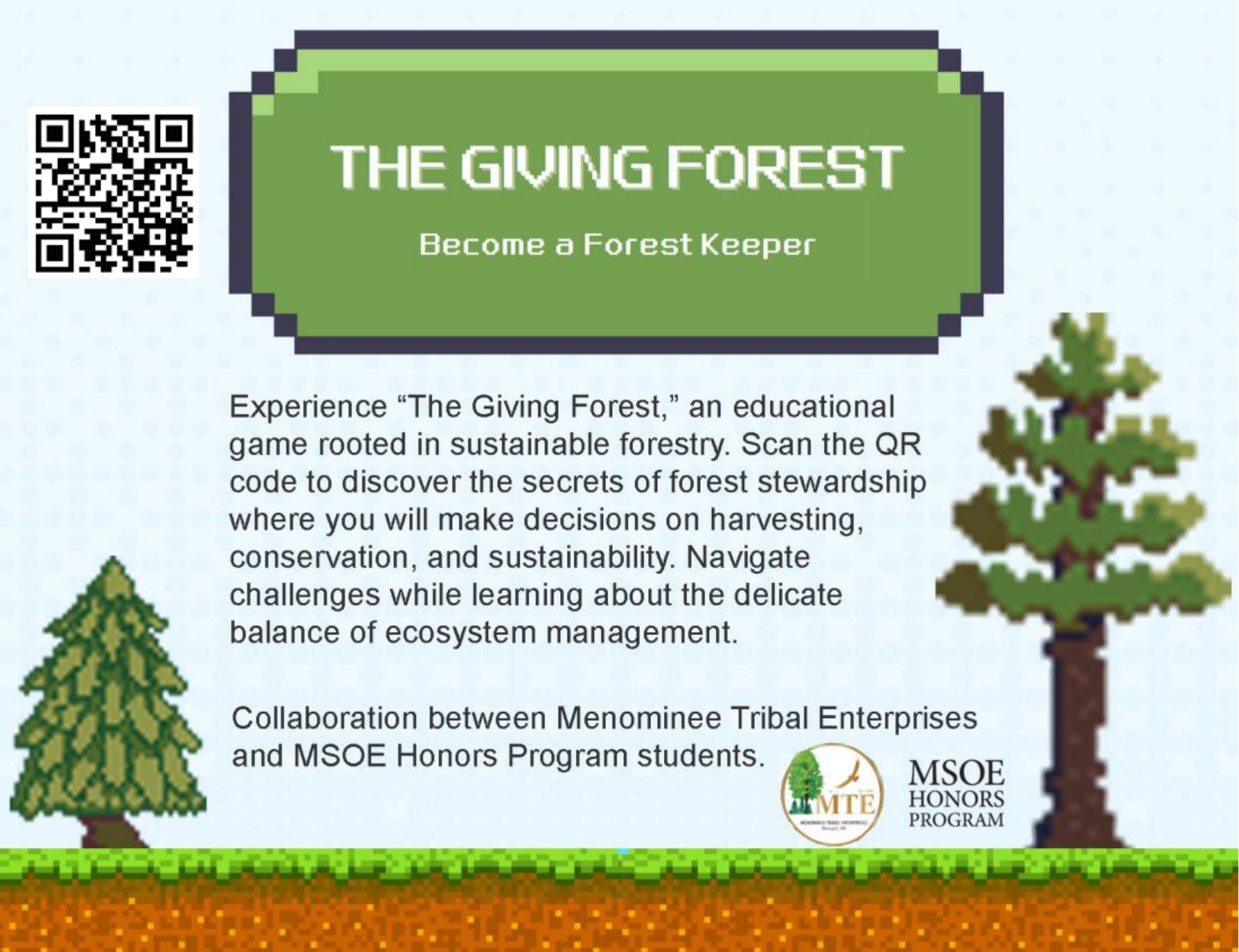Forestry
MTE Forestry
The Menominee Forest has been sustainably managed by the Menominee Tribe for more than 150 years, and is a premier example of forest management in the world. The sustainable management of the forest allows us to experience a traditional quality of life from an intact, diverse, productive, and healthy forest ecosystem on the reservation.

Protecting Wisconsin's Biodiversity with Sustainable Forest Management
The Menominee Forest, spanning 217,000 commercial acres in Wisconsin's "tension zone," showcases thirteen distinct forest cover types, with Northern Hardwood (32%) and White Pine (16%) dominating. Through sustainable management practices and a "forest-first" philosophy, MTE Wood harvests 75,000 cords of pulpwood and 14 million board feet of saw timber annually, maintaining one of the Lake States' most diverse and well-managed forests.
Targeted Forest Management: Balancing Timber Yield and Ecosystem Health
The Menominee Forest operates under comprehensive sustained-yield management, employing both even-aged and uneven-aged silvicultural techniques across diverse forest cover types. By carefully considering shade tolerance, age distribution and stand conditions, MTE implements strategic harvesting practices that mimic natural forest processes. This science-based approach, guided by the Kotar Habitat Typing system and strict Annual Allowable Cut limits, ensures optimal timber yields while maximizing forest diversity and health.
Menominee Tribe’s FSC-Certified Forestry Practices
Drawing from over 150 years of indigenous knowledge, MTE maintains FSC certification for forest management and chain of custody, upholding rigorous environmental standards to protect ecosystems, respect native cultures and prevent illegal logging. As the business arm of the Menominee Indian Tribe of Wisconsin, MTE employs approximately 300 individuals and embodies the tribe's cultural values, viewing the forest as sacred and integral to their existence.
MTE's Sustainable Timber for LEED-Certified Construction
MTE supplies LEED-certified building materials harvested through sustainable forestry practices, aligning with generations of Menominee Tribe environmental stewardship. Our lumber products help builders achieve Leadership in Energy and Environmental Design (LEED) certification points through the U.S. Green Building Council's rigorous standards, supporting residential and commercial projects committed to environmentally responsible construction.
MTE’s Commitment to Environmental Compliance & NEPA Standards
The MTE forestry program maintains comprehensive environmental compliance, publishing annual Environmental Assessments, Decision Notices and Findings of No Significant Impact. In 2024, additional assessments were completed for two blowdown salvage operations, demonstrating MTE's commitment to responsible forest management and environmental stewardship through NEPA compliance.
MTE incorporates a comprehensive forestry plan through a variety of initiatives aimed at maintaining the health and well-being of our forest. Below is a capsule look at each of our Sustainable Forestry Programs:
Menominee Tribal Enterprises Forestry Department Programs
Silviculture |
Uses the harvest schedule to develop harvest prescriptions. Silviculture also works with other resource professionals, both at Menominee as well as the state and federal levels to ensure MTE is utilizing the best available practices for forest management. |
Harvest Prep |
Follows the guidelines of the management prescriptions to delineate the harvest units, mark the timber, and estimate the volume of timber to be removed from the unit. |
Forest Development |
Works with the other programs to develop and implement prescriptions of a pre-commercial nature (e.g. pre-commercial thinning, planting, site prep, etc). |
Timber Harvest Administration |
Cooperates with logging contractors to ensure the units are harvested according to the prescription, and evaluates the performance of the logging contractors to protect the soil, water, and forest resources. |
Forest Health Program
|
A protection program to ensure the health of the forest and the livelihood of its people. The program's objective is to protect the forest from damaging insects, pathogens, and weeds (particularly non-native invasive species) through the use of integrated pest management principles. |
Fire Management |
Conducts fire suppression activities across the forest. Develops and implements burn and fuel reduction prescriptions and activities that complement the goals of Forest Development and Silviculture. |
Forest Inventory |
Performs long and near term planning and harvest scheduling based on targets, goals, and current knowledge of the forest composition. |
Planning, timber harvests, non-commercial treatments, and prescribed burns are developed and implemented by the coordinated efforts of these programs. Other Agencies (e.g. MITW Environmental Services, Historic Preservation, etc.) provide input and signature authority to prescription development and implementation.







